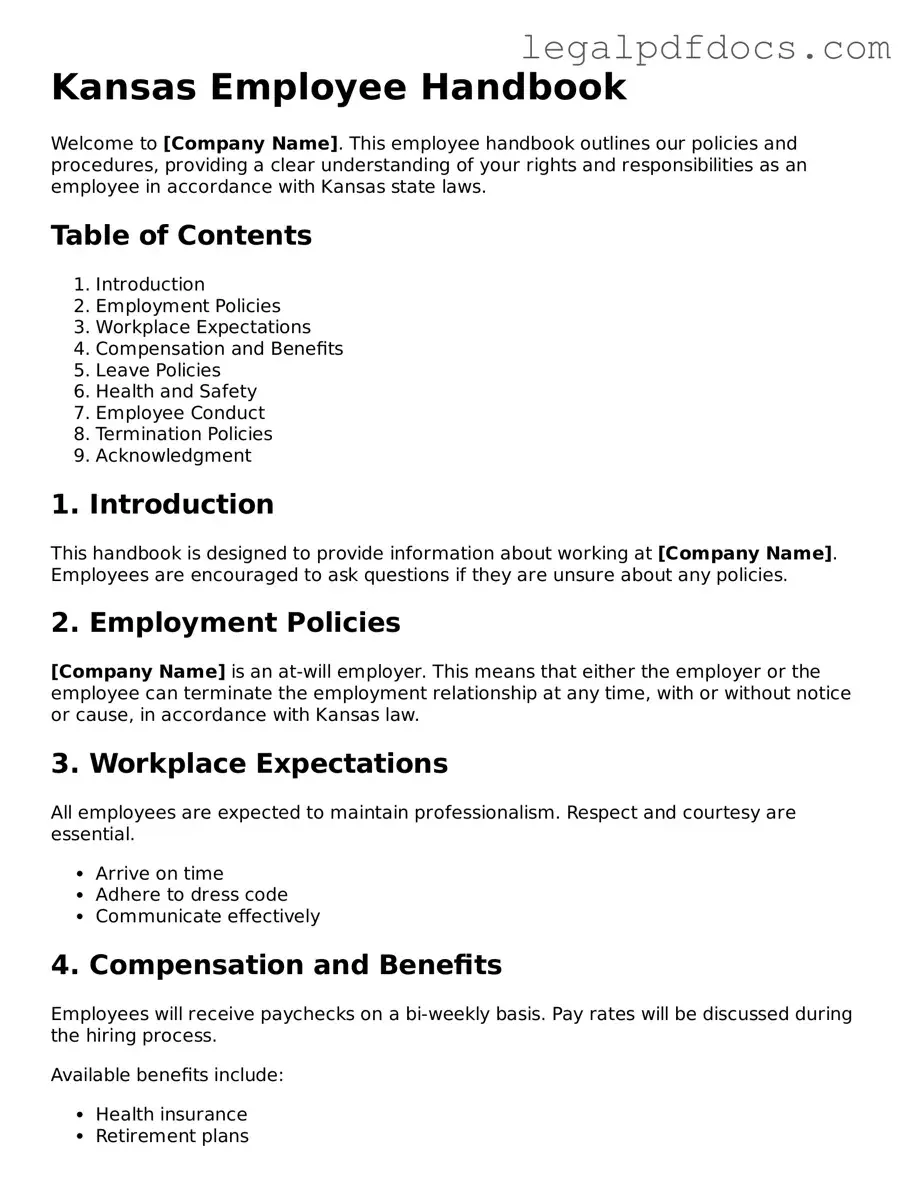Official Employee Handbook Form for Kansas
The Kansas Employee Handbook form serves as a crucial document that outlines the policies, procedures, and expectations within a workplace. This form helps both employers and employees understand their rights and responsibilities, fostering a positive work environment. To ensure your workplace is well-informed, consider filling out the form by clicking the button below.
Open Employee Handbook Editor Here
